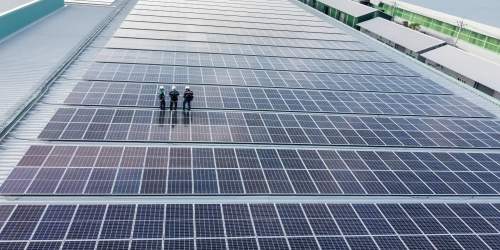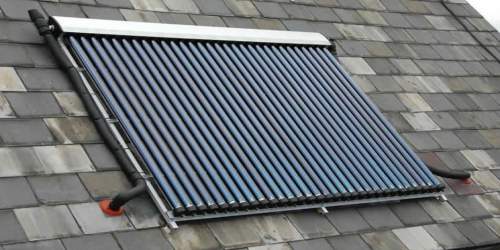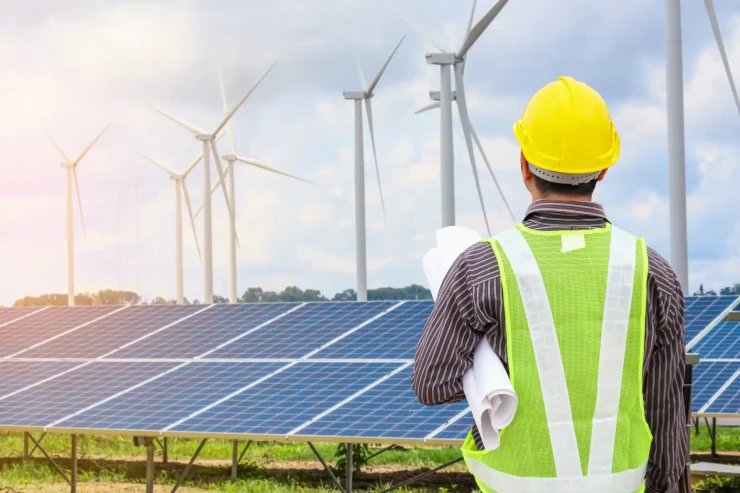Despite the ongoing Covid-19 pandemic, 2021 turned out to be one of the most significant years for solar PV in the UK. According to Solar Energy UK, the UK added 730MW of new solar capacity during the year which was an increase of 36% on 2020 when 538MW was installed.
Figures from research by Solar Media Ltd and released by Solar Energy UK show that 369MW of this solar capacity was rooftop solar, the highest total since 2015. Total PV capacity in the UK is now 14.6GW, up 5.3% on 2020. It’s important to note that the new growth in the rooftop sector is entirely subsidy-free.
Solar Energy UK remarked that all three solar markets, residential rooftop, commercial scale, and ground mount are seeing stable growth without the help of subsidies. The fact that the solar market is no longer dependent on government incentives and is continuing to grow is a great achievement for the solar industry.
COMPARE PRICES FROM LOCAL INSTALLERS
Compare prices from local companies fast & free
Enter your postcode to compare quotes from leading professionals. We promise to keep your information Safe & Secure. Privacy Policy
Solar Energy UK Chief Executive Chris Hewett said:
“2021 was the year the UK’s solar industry came of age. We are now seeing stable, sustained growth across the sector, with order books overflowing. As fossil fuel energy bills soar, rooftop solar in particular is now very popular. More and more consumers and businesses are investing in solar because they know it is a proven way to cut their energy bills and carbon emissions. It is also now a cheap way to charge EVs and decarbonise heating.”
Chris Hewett said that the UK’s solar industry is ready to meet the challenge of supplying this demand. He said that Solar Energy UK would like to see the UK government match the ambition of the market by setting a deployment target of 40GW. This action would support the industry to take long term investment decisions and build the workforce skills that will create thousands of green jobs across the country.
The figures revealed by Solar Energy UK mean that the UK is on course to double its solar capacity by 2030, but this needs to be trebled if the UK is to meet its net zero target for 2050. The set of policy amendments that Solar Energy UK are proposing would treble solar capacity when compared to current levels. Two ways that the government could spur solar deployment would be to put an end to VAT for solar systems and to continue to make the technology available for Contracts of Difference (CfD) auctions.
There is no doubt that spiralling natural gas prices have helped to stimulate the rooftop market as many UK households are facing unprecedently high energy bills. Commercial energy buyers are also trying to protect themselves against the volatility of buying electricity based on fossil fuels by installing more onsite solar.
Crucially, solar technologies are being seen as a means to help decarbonising heating, which is well-known for being a sluggish sector when it comes to decarbonisation. In 2021 there were nearly 67,000 solar PV and solar thermal installations accredited by the Microgeneration Certification Scheme, outperforming the number of heat pump installations, which came to around 24,000 installations.
Interestingly the final quarter of 2021 was the strongest of the year for solar PV. This wasn’t expected as the final quarter of the year has less hours of daylight, but it didn’t seem to make a difference to the build-out of projects and sites.
The biggest contribution of all came from ground-mounted solar farms. Eight mid-size solar farms were built, adding up to 142MW, with four of these in the 20-30MW range. There were also seven smaller sites in the 1-10MW range, funded and owned by public sector entities such as NHS, research institutes, local councils, and the MoD.
The figures revealed by Solar Energy UK mean that the UK is on course to double its solar capacity by 2030, but this needs to be trebled if the UK is to meet its net zero target for 2050.
There are signs of gigawatt plus levels of annual solar additions in the future, according to Finlay Colville, head of research at Solar Media Ltd.
Recent positive developments such as the new building regulations coming into effect in June of this year and the move to annual renewables auctions will also boost the market.
New Homes and buildings will have to produce significantly less CO2 emissions under new rules being introduced by the government to help the country move towards net zero.
Currently, heating and powering buildings makes up 40% of the UK’s total energy use. The new regulations will mean that CO2 emissions from new build homes must be under 30% lower than present standards and emissions from other new buildings, including offices and shops, must be reduced by 27%.
Installing low carbon technology such as solar panels and heat pumps as well as using materials in a more energy efficient way to keep in heat will help cut emissions. In turn this will help lower the cost of energy bills for families as well as helping to deliver the UK’s climate change ambitions.
The solar industry is attracting new players and new money with different relationships being established pre-build, during construction and post-build. Not since the early growth stage of 2010-2015 has the UK solar market been so vibrant.




























